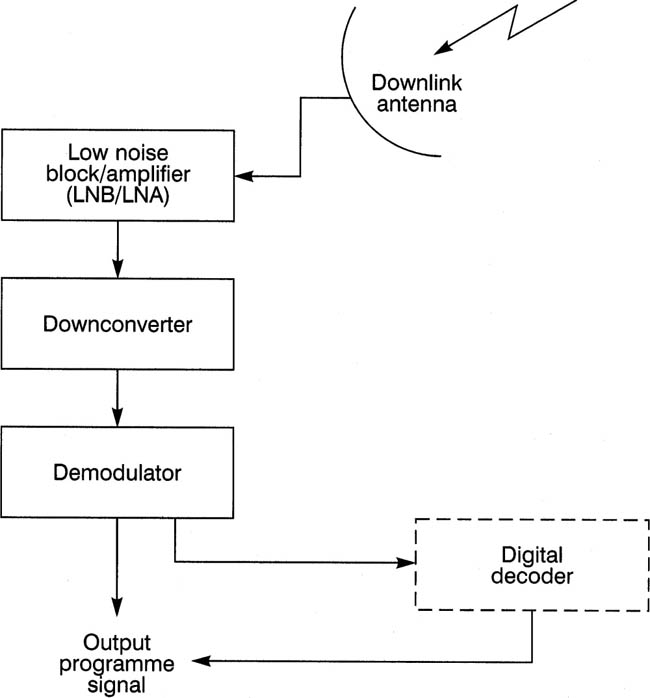Basic satellite communication theory
Uplinks – space segment – downlinks
A satellite receives a signal from a ground transmitter – the ‘uplink’ – and re-transmits (‘reflects’) the signal to a ground receiver – the ‘downlink’. A satellite can be considered to have a number of these ‘radio mirrors’ – termed transponders. The part of the system in the sky is termed the ‘space segment’, as we saw on page 15. The signal takes a finite time to travel up to the satellite and back down to earth (referred to as satellite delay), and is around 250 ms.
Uplink chain

As we look at the functions within a complete satellite transmission system, there are certain processes that are part of the uplink and the downlink which will be seen in principle to be common. The signal is modulated or demodulated, amplified, and converted up or down in frequency. The uplink is primarily composed of a modulator, an upconverter, and a high power amplifier (HPA), which is connected to an antenna (dish).
Downlink chain

Some form of monitoring of the uplinked signal would also be implemented. Additionally, for a digital system, there is an encoder – the digital compression component.
The downlink has an antenna, a downconverter, and a demodulator, and as with the uplink for the digitally compressed signal, a decoder, and typically there would also be a monitoring system able to measure parameters of the received signal.
Typically, the downlink antenna will be significantly larger than the SNG uplink antenna (from 4 to 30 m in diameter) and a location used for this is termed a ‘teleport’. National telecommunication authorities, satellite operators, individual broadcasters and private enterprises operate teleports.
